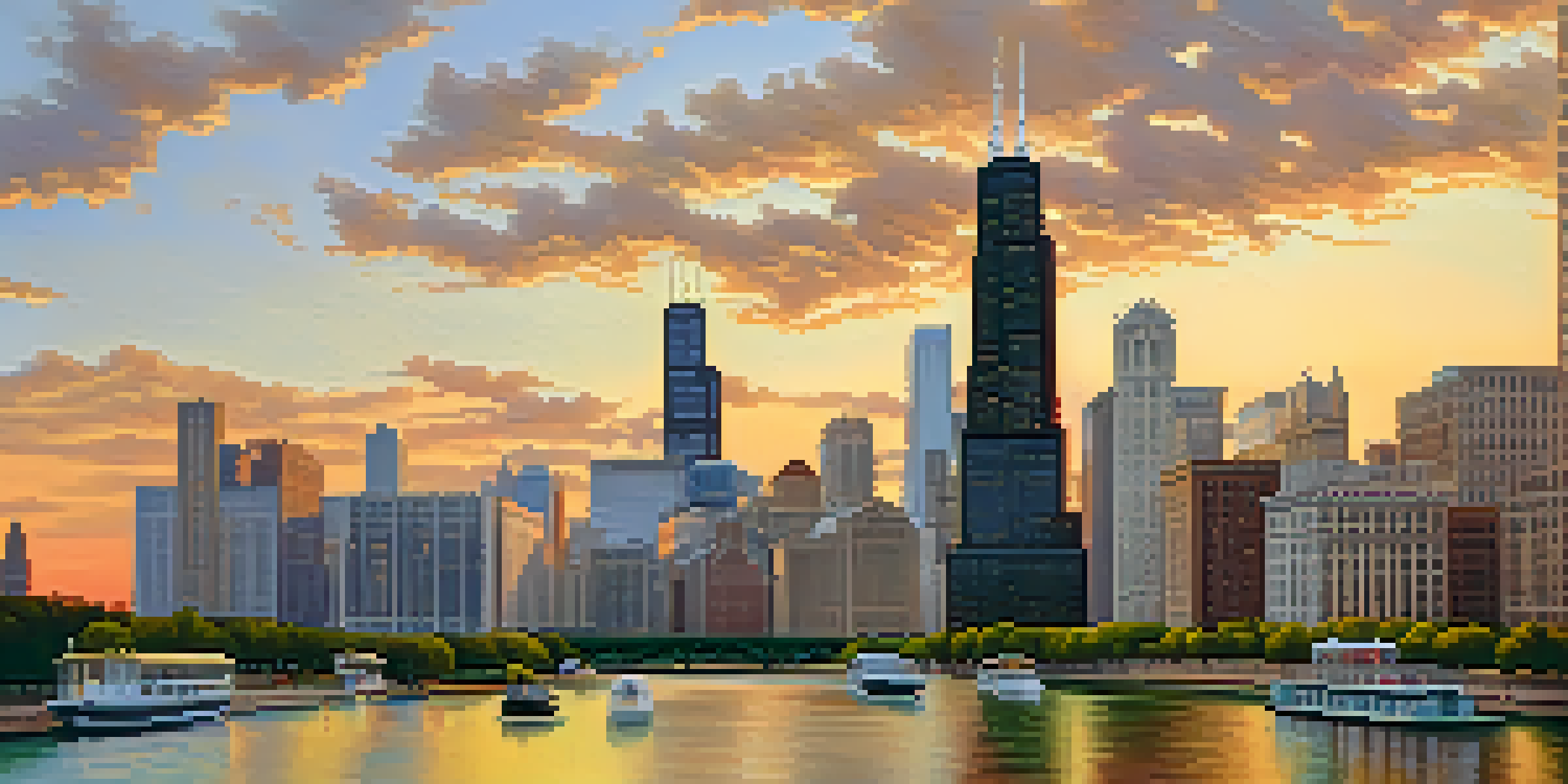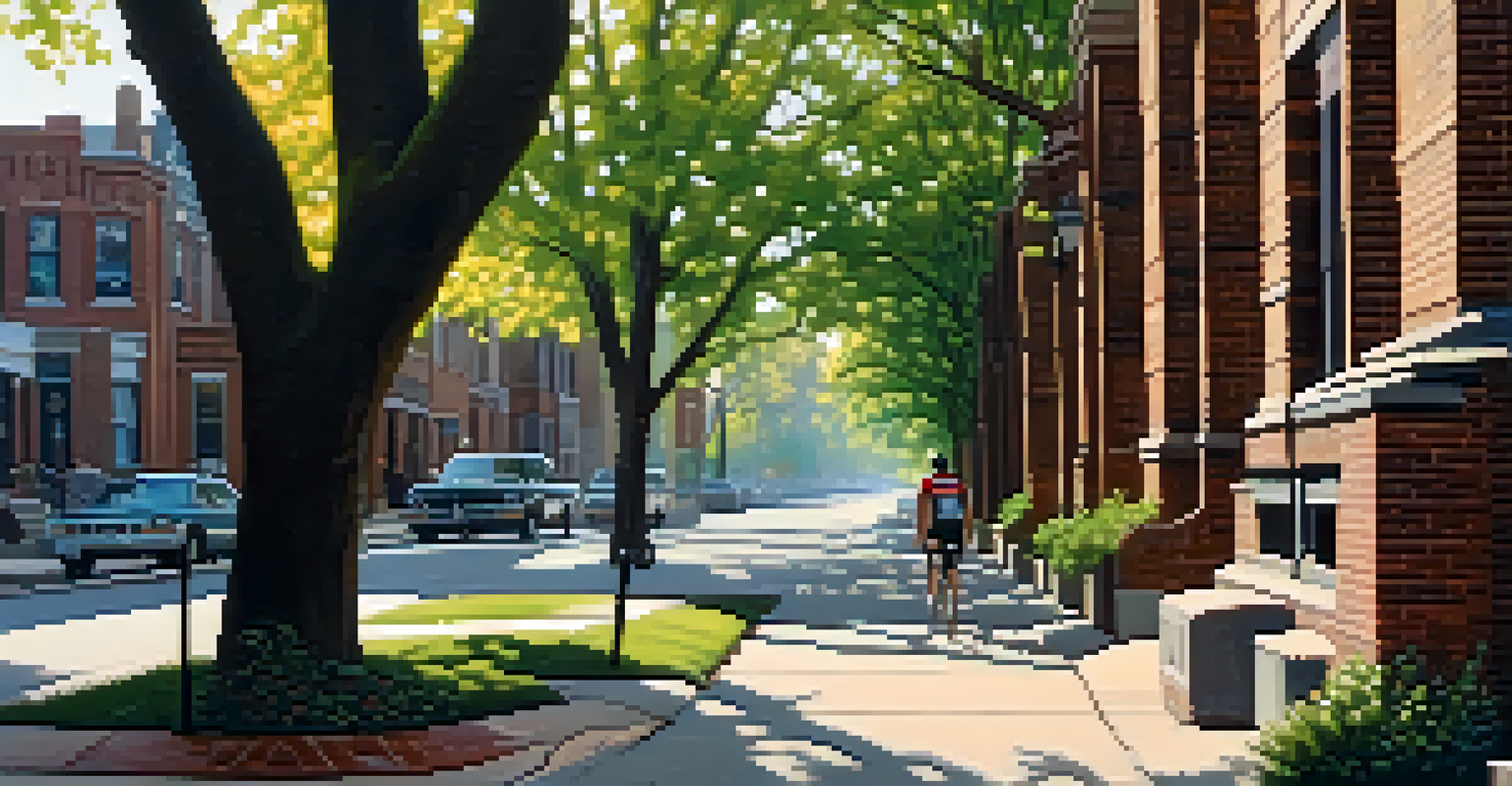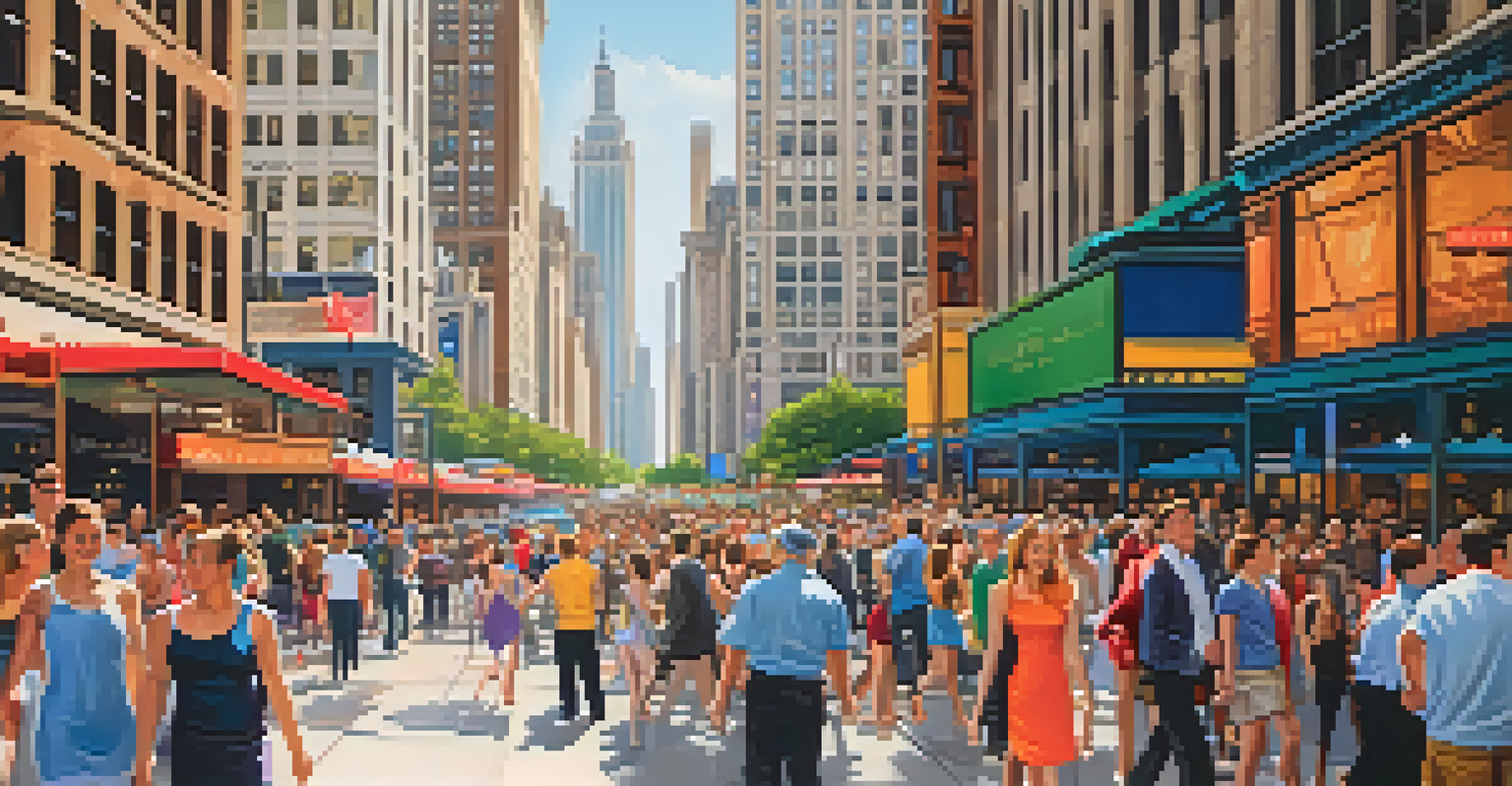Impact of Chicago's Architecture on Film Aesthetics

Chicago: A City of Architectural Marvels and Film Backdrops
Chicago is a treasure trove of architectural styles, blending the old with the new. Its skyline, punctuated by towering skyscrapers and historic buildings, provides a stunning visual narrative that filmmakers often exploit. The city's unique structures, from the Art Deco towers to the modern glass facades, serve as more than just backdrops—they create an atmosphere that enhances storytelling.
Chicago is an astonishingly beautiful city, and its architecture is a significant part of that beauty.
When you think of Chicago, images of the Willis Tower or the historic Tribune Tower likely come to mind. These structures are not merely part of the city; they evoke emotions and set the tone for various cinematic genres. Whether it’s a thriller set in a shadowy alley or a romantic comedy in a sunlit park, the architecture influences how stories unfold on screen.
This symbiotic relationship between architecture and film is evident in countless movies. For instance, the gritty streets of ‘The Dark Knight’ contrast sharply with the elegance of ‘Chicago,’ showcasing how the city’s diverse aesthetics can shape the viewer's experience.
The Influence of Chicago's Urban Landscape on Cinematic Storytelling
The urban landscape of Chicago is not just visually impressive; it also narrates stories of its own. Filmmakers often use the city’s streets and public spaces to reflect the characters' journeys, struggles, and triumphs. For example, the bustling Michigan Avenue can symbolize ambition, while quieter neighborhoods may evoke nostalgia or introspection.

Moreover, the city's layout, with its iconic grid system and river, provides filmmakers with unique framing opportunities that contribute to visual storytelling. The juxtaposition of modernity and history found in Chicago's architecture allows for dynamic scenes that enhance the narrative. This versatility makes it a coveted filming location for diverse genres.
Chicago's Architecture Enhances Film
The city's unique architectural styles significantly influence the storytelling and mood of various films.
In films like ‘Transformers: Dark of the Moon,’ the city transforms into a battleground, showcasing how urban environments can amplify dramatic narratives. This strategic use of Chicago's landscape showcases the city not only as a setting but as a character in its own right.
Iconic Films that Showcase Chicago's Architectural Beauty
Many iconic films have chosen Chicago as their playground, capturing its architectural beauty through stunning cinematography. Movies like 'Ferris Bueller's Day Off' and 'The Blues Brothers' highlight the city's landmarks, making them integral to the story. This not only promotes the city but also resonates with audiences who recognize these places.
The architecture of Chicago is a reflection of the city’s spirit: bold, innovative, and always evolving.
The architecture of Chicago serves as a visual cue, helping to establish the film's setting, mood, and even plot. In 'The Untouchables,' for example, the grandeur of the Chicago Board of Trade Building reflects the power dynamics at play during the Prohibition era. Such choices enhance the storytelling by grounding it in a real, recognizable context.
Even more recent films like 'The Batman' have utilized Chicago's unique skyline to create visually captivating scenes. The city’s architecture, with its distinctive character, allows filmmakers to craft narratives that feel both timeless and contemporary.
Architectural Styles in Chicago and Their Cinematic Representations
Chicago boasts a rich tapestry of architectural styles, from Gothic to Modernist, each bringing its own flavor to film aesthetics. The neo-Gothic Tribune Tower might evoke a sense of history and grandeur, making it a perfect setting for period dramas or historical narratives. Meanwhile, the sleek lines of contemporary buildings lend themselves well to futuristic stories.
Filmmakers often play with these architectural styles to create contrasts in their narratives. For instance, a film might juxtapose the ornate details of the Chicago Cultural Center against the stark, minimalist lines of the modern skyscrapers, enhancing themes of conflict or change. This interplay of styles adds depth to visual storytelling.
Filmmakers Use Urban Landscape Creatively
Chicago's urban layout and iconic structures serve as powerful backdrops that reflect characters' journeys and themes.
Moreover, the choice of location can signify character traits or themes. A character thriving in the bustling Loop might represent ambition and success, while another, set against the backdrop of a serene park, might symbolize introspection and peace. Such choices make the architecture a silent yet powerful participant in the storytelling.
How Filmmakers Capture the Essence of Chicago's Architecture
Capturing Chicago's architecture on film is an art form in itself. Filmmakers often employ various techniques, such as drone shots and wide-angle lenses, to showcase the city's sprawling skyline and intricate details. This not only emphasizes the grandeur of the buildings but also allows the audience to experience the city from unique perspectives.
Lighting plays a crucial role, too; the golden hour can transform the city's facades into warm, inviting scenes, while nighttime shots can highlight the dramatic interplay of shadows and lights. Filmmakers understand that the right conditions can enhance the architectural beauty, creating a visual feast for viewers.
Additionally, movement within the frame can create a narrative rhythm that parallels the city’s energy. For instance, a car chase through downtown Chicago not only showcases the architecture but also immerses the audience in the bustling life of the city, making them feel as though they are part of the action.
The Role of Chicago's Architecture in Shaping Genre Styles
Chicago's architecture has a profound impact on the genres of films shot in the city. For instance, the stark lines and imposing structures lend themselves well to the thriller genre, creating a sense of tension and suspense. Movies like 'The Dark Knight' capitalize on this, using the city's modernity to enhance the film's darker themes.
In contrast, romantic comedies often utilize the more picturesque elements of Chicago, such as its parks and waterfronts. Films like 'While You Were Sleeping' showcase the city’s charm, making the architecture an integral part of the love story. The settings help to create a warm and inviting atmosphere that draws audiences into the narrative.
Future Trends in Film and Architecture
As Chicago evolves, filmmakers are likely to embrace new architectural trends and technologies to tell modern stories.
Moreover, Chicago's architecture can also shape the identity of independent films. Smaller productions often take advantage of the city’s lesser-known gems, which can add authenticity and richness to their stories. This versatility shows how the city's architectural landscape can cater to a variety of filmmaking styles.
Future Trends: The Evolution of Chicago's Architecture in Film
As Chicago continues to evolve, so too does its representation in film. The city is undergoing a transformation with new architectural projects that challenge traditional styles. Filmmakers are likely to embrace these innovations, using them to tell modern stories that reflect contemporary society.
Increased focus on sustainability and green architecture also presents new opportunities for filmmakers. As eco-friendly designs become more prominent, they can represent a shift in societal values. Films that incorporate these elements can resonate with audiences who are increasingly aware of environmental issues.

Moreover, advancements in technology, such as virtual reality and augmented reality, may change how filmmakers interact with Chicago's architecture. These tools could allow for immersive storytelling experiences that transport viewers into the heart of the city, deepening their connection to both the architecture and the narrative.